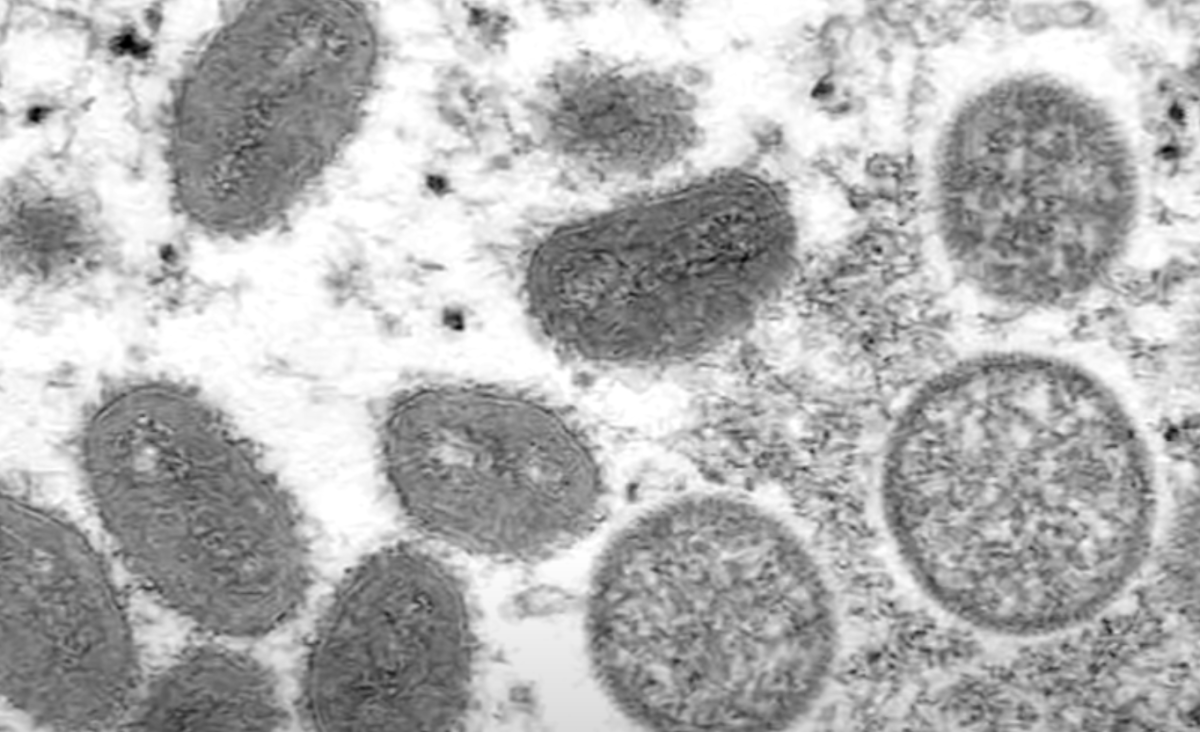
When a new case of mpox appeared in California this month, it caught health officials’ attention for an unusual reason. The strain involved is the more severe type—and for the first time, it showed up in someone who hadn’t traveled abroad. That finding has public health teams working to understand how the infection occurred and whether others may have been exposed.
The case, identified in Long Beach, represents the seventh confirmed clade I mpox infection in the country this year, but the first without recent travel history.
The patient required hospitalization initially but is now recovering at home in isolation.
No other identifying details were provided about the patient, including name, age, or sex.
Health officials are conducting thorough contact tracing to understand how the person became infected.
"We are taking this very seriously and ensuring our community and health care partners remain vigilant so we can prevent any more cases," Long Beach Mayor Rex Richardson said in a press release.
What this means for your daily life
For most older Americans, this news shouldn't dramatically change your daily routine, but it does mean paying closer attention to unusual symptoms and staying informed about prevention measures.
Public health experts emphasize that the overall risk of clade I mpox to the general population in the United States remains low.
The significance lies not in immediate danger, but in what this case represents: continued vigilance in monitoring the virus and strengthening public health response efforts.
This shift requires enhanced surveillance and ongoing cooperation among healthcare providers and state agencies.
Did you know?
What Does This Mean for You?
Think of this like the early warning system for severe weather—officials are raising awareness and monitoring the situation closely, but there's no need to change your plans or avoid public spaces. The key is staying informed and knowing what symptoms to watch for.
Also read: New mpox variant strikes–Find out how one person’s diagnosis has experts on high alert.
Understanding the two types of mpox
Not all mpox infections are the same, and understanding the difference helps put this California case in perspective.
There are two main types: clade I (with subclades Ia and Ib) and clade II (with subclades IIa and IIb).
Historically, clade I mpox has caused more severe illness and deaths than clade II mpox.
The milder clade II strain was responsible for the outbreak many of us remember from 2022.
That outbreak peaked in summer 2022, leading to more than 100,000 cases in 122 countries, including more than 30,000 cases in the US.
Most people typically recover within two to four weeks without specific treatment, according to the CDC.
"We are taking this very seriously and ensuring our community and health care partners remain vigilant"
Also read: Plague case reported in South Lake Tahoe sparks health advisory
Recognizing the symptoms
Knowing what to watch for is especially important now that local monitoring is underway.
People with mpox often get a rash that may be located on hands, feet, chest, face, mouth, or near the genitals.
The illness typically starts with flu-like symptoms—fever, chills, swollen lymph nodes, and body aches—before the characteristic rash appears.
The incubation period is 3–17 days, during which a person doesn't have symptoms and may feel fine.
Key symptoms to recognize
Unexplained rash or skin lesions
Fever and chills
Swollen lymph nodes
Muscle aches and fatigue
Sore throat
Headache
If you develop any combination of these symptoms, especially an unusual rash, contact your healthcare provider promptly.
Also read: First US case of flesh-eating screwworm confirmed—what you should know
Protection and prevention strategies
The good news is that effective protection exists.
The JYNNEOS vaccine is recommended for adults at high risk for mpox, which includes people who are gay, bisexual, or other men who have sex with men and have recent or upcoming risk factors like multiple sexual partners, intimate contact with someone who may have mpox, or sex at commercial venues.
While current vaccine recommendations focus on specific high-risk groups, anyone concerned about exposure should discuss vaccination with their healthcare provider.
The vaccine works best before exposure but can still provide some protection even after contact with the virus.
Beyond vaccination, standard precautions remain effective: avoid direct contact with people who have suspected mpox, don't share personal items like clothing or bedding with someone who might be infected, and practice good hand hygiene.
Also read: Exposed to measles? Find out if you’re at risk after a recent case
Learning from 2022's outbreak
Many readers will remember the 2022 mpox outbreak that dominated health headlines.
That experience taught public health officials valuable lessons about rapid response, contact tracing, and vaccine distribution that they're applying now.
The 2022 outbreak primarily affected men who have sex with men, but it demonstrated how quickly a virus can spread through close-contact networks.
Importantly, it also showed that effective public health measures—including vaccination, education, and behavior modifications—can successfully control an outbreak.
The current situation is different because we're dealing with a potentially more severe strain, but officials have better tools and experience than they did three years ago.
Also read: US hit with first severe bird flu case—is this a growing threat?
When to seek medical care
Don't hesitate to contact your healthcare provider if you develop symptoms that concern you, especially if you have risk factors or potential exposure.
Early diagnosis and care can make a significant difference in outcomes.
Anyone with an unexplained rash or lesions should seek care promptly.
This is particularly important for older adults, who may have underlying health conditions that could complicate any infection.
Your doctor can assess your symptoms, determine if testing is needed, and provide appropriate treatment if necessary.
They can also advise you on isolation precautions to protect your family and community.
What seniors need to know about this mpox development
- This is the first US case of the more severe mpox strain without travel history
- Overall risk to the general public remains low, according to health officials
- No other identifying details were provided about the patient
- Watch for unusual rashes, fever, swollen lymph nodes, and flu-like symptoms
- Effective vaccines are available—discuss with your healthcare provider if you have concerns
- Basic prevention includes good hygiene and avoiding contact with infected individuals
Also read: Stop eating this now: The shocking food behind America's UTI epidemic!
The bigger picture
This California case represents an important milestone in mpox surveillance, but it doesn't signal an imminent widespread outbreak.
Public health systems are functioning as designed—detecting cases quickly, tracing contacts, and implementing appropriate responses.
The fact that officials identified this case and are conducting thorough investigations demonstrates that our surveillance systems are working.
This early detection and response approach is exactly what prevents small incidents from becoming large outbreaks.
What This Means For You
For most older Americans, the practical impact remains minimal.
Continue your normal activities while staying informed about symptoms to watch for.
The combination of effective vaccines, experienced public health responses, and early detection provides multiple layers of protection for communities.
Read next:
- A deadly fungus is spreading fast across the US—here’s why experts urge older adults to pay close attention
- Protect yourself: The silent "rabbit fever" epidemic the CDC warns could affect you!
- A 30-year wait ends: New antibiotic offers relief for millions struggling with UTIs
What questions do you have about mpox prevention or symptoms? Have you discussed vaccination with your healthcare provider? Share your thoughts and experiences in the comments below.
Primary Source
https://www.yahoo.com/news/articles/california-confirms-1st-us-case-181021873.html
First locally acquired US case of more severe clade 1 mpox identified in California | CIDRAP
Cited text: The clade 1 case is the nation's first in a person with no recent travel history and the seventh clade 1 case in the country.
Excerpt: The case, identified in Long Beach, represents the seventh confirmed clade I mpox infection in the country this year, but the first without recent travel history.
https://www.cidrap.umn.edu/mpox/fir...ore-severe-clade-1-mpox-identified-california
First locally acquired US case of more severe clade 1 mpox identified in California | CIDRAP
Cited text: The patient required hospitalization and is now isolating and recovering at home, the City of Long Beach news release said.
Excerpt: The patient required hospitalization initially but is now recovering at home in isolation.
https://www.cidrap.umn.edu/mpox/fir...ore-severe-clade-1-mpox-identified-california
California confirms first clade I mpox case | CDC Newsroom
Cited text: The anticipated overall risk of clade I mpox to the general population in the United States from the outbreak in Central and Eastern Africa is low.
Excerpt: Public health experts emphasize that the overall risk of clade I mpox to the general population in the United States remains low.
https://www.cdc.gov/media/releases/s1116-california-first-clade.html
California confirms first clade I mpox case | CDC Newsroom
Cited text: There are two types of mpox, clade I (with subclades Ia and Ib) and clade II (with subclades IIa and IIb; IIb caused the ongoing global outbreak).
Excerpt: There are two main types: clade I (with subclades Ia and Ib) and clade II (with subclades IIa and IIb).
https://www.cdc.gov/media/releases/s1116-california-first-clade.html
California confirms first clade I mpox case | CDC Newsroom
Cited text: Historically, clade I mpox has caused more severe illness and deaths than clade II mpox; however, recent data demonstrate that infections from clade I...
Excerpt: Historically, clade I mpox has caused more severe illness and deaths than clade II mpox.
https://www.cdc.gov/media/releases/s1116-california-first-clade.html
California officials confirm 1st US case of severe mpox strain with no travel history | WPHM
Cited text: Clade II was responsible for a large outbreak that peaked in summer 2022, leading to more than 100,000 cases in 122 countries, including more than 30,...
Excerpt: That outbreak peaked in summer 2022, leading to more than 100,000 cases in 122 countries, including more than 30,000 cases in the U.S.
https://www.wphm.net/2025/10/16/cal...-of-severe-mpox-strain-with-no-travel-history
California confirms first clade I mpox case | CDC Newsroom
Cited text: People with mpox often get a rash that may be located on hands, feet, chest, face, mouth and/or near the genitals, including penis, testicles, labia, ...
Excerpt: People with mpox often get a rash that may be located on hands, feet, chest, face, mouth and/or near the genitals.
https://www.cdc.gov/media/releases/s1116-california-first-clade.html
California confirms first clade I mpox case | CDC Newsroom
Cited text: The incubation period is 3–17 days. During this time, a person does not have symptoms and may feel fine.
Excerpt: The incubation period is 3-17 days, during which a person doesn't have symptoms and may feel fine.
https://www.cdc.gov/media/releases/s1116-california-first-clade.html
California officials confirm 1st US case of severe mpox strain with no travel history | WPHM
Cited text: The JYNNEOS vaccine is recommended for adults at high risk for mpox, which includes people who are gay, bisexual or other men who have sex with men an...
Excerpt: The JYNNEOS vaccine is recommended for adults at high risk for mpox, which includes people who are gay, bisexual or other men who have sex with men and have recent or upcoming risk factors like multiple sexual partners, intimate contact…
https://www.wphm.net/2025/10/16/cal...-of-severe-mpox-strain-with-no-travel-history
First locally acquired US case of more severe clade 1 mpox identified in California | CIDRAP
Cited text: Anyone with an unexplained rash or lesions should seek care promptly.
Excerpt: Anyone with an unexplained rash or lesions should seek care promptly.
https://www.cidrap.umn.edu/mpox/fir...ore-severe-clade-1-mpox-identified-california






